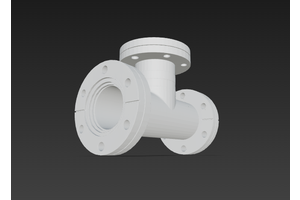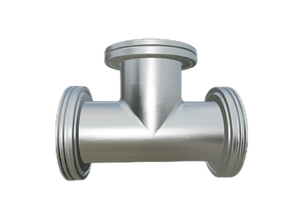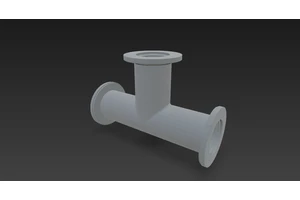-
Understanding the Relationship Between Pressure, Gas Load, and Pumping Speed in Vacuum Systems
In vacuum systems, the simple equationQ = P × Sis used to explain almost every design challenge. Gas load (Q), pressure (P), and pumping speed (S) are the three variables whose balance determines how well a vacuum system performs.1. How to Reach a Lower Pressure (P)?Reaching a lower pressure is often the hardest part of vacuum work. Once you understand that pressure depends on the balance between the system’s gas load (Q) and the available pumping speed (S), the task becomes clearer.Below are the key concepts in more detail.2. Understanding Pressure (P)Pressure (P) is the force per unit area exerted by gas molecules colliding with a surface.To reduce pressure (P):Increase pumping speed (S), and/orDecrease gas load (Q).3. Understanding Pumping Speed (S)Pumping speed (S) is the volumetric rate at which a pump removes gas from the chamber.To reduce pressure (P):Increase pumping speed (S), and/orUse larger-diameter and/or shorter lines between pump and chamber.4. Understanding Gas Load (Q)
View -
Vacuum Pump – A Concise Introduction
A vacuum pump is any device that removes gas molecules from a sealed volume in order to leave behind a partial vacuum. First developed in the 17th century by Otto von Guericke, modern pumps are indispensable in laboratories, manufacturing, and high-technology industries.Main Types• Positive-displacement pumps (e.g., rotary vane, diaphragm, piston) physically expand and contract chambers to trap and expel gas.• Momentum-transfer pumps—diffusion and turbomolecular—use high-speed blades or vapor jets to impart kinetic energy to gas molecules, pushing them toward the exhaust.• Entrapment pumps such as cryopumps, ion pumps, and getter pumps condense or chemically bind gases without moving parts, achieving ultra-high vacua (<10⁻⁹ mbar).Key Performance Metrics• Ultimate pressure: the lowest achievable pressure under ideal conditions.• Pumping speed: volume flow rate at the inlet, typically expressed in m³ h⁻¹ or L s⁻¹.• Compression ratio: exhaust-to-inlet pressure ratio across the pump.App
View -
An Introduction to Vacuum Pump Units and Their Applications
Vacuum pump units are devices that combine vacuum pumps with corresponding vacuum components based on their performance requirements. These units are characterized by their compact structure and convenient installation and use.Vacuum pumping units can be categorized into low-vacuum units, medium-vacuum units, high-vacuum units, ultra-high-vacuum units, and oil-free vacuum units. The name of a vacuum unit is typically determined by its main pump, such as diffusion pump units, molecular pump units, etc.Low-Vacuum Pumping UnitsLow-vacuum pumping units operate within a pressure range of approximately 1330–100 Pa. Their main features include high working pressure and large exhaust volume, although their pumping speed is lower than that of medium- and high-vacuum units. These units are commonly used for rough pumping of vacuum chambers, as well as in vacuum conveying, vacuum impregnation, vacuum filtration, vacuum drying, and vacuum degassing (such as steel melt treatment) processes where th
View -
Several selection types of dry vacuum pumps used in semiconductor processes
In the past decade, several different types of dry vacuum pumps have been designed and produced, with significant differences in mechanical structure design.
View
vacuum pumps




